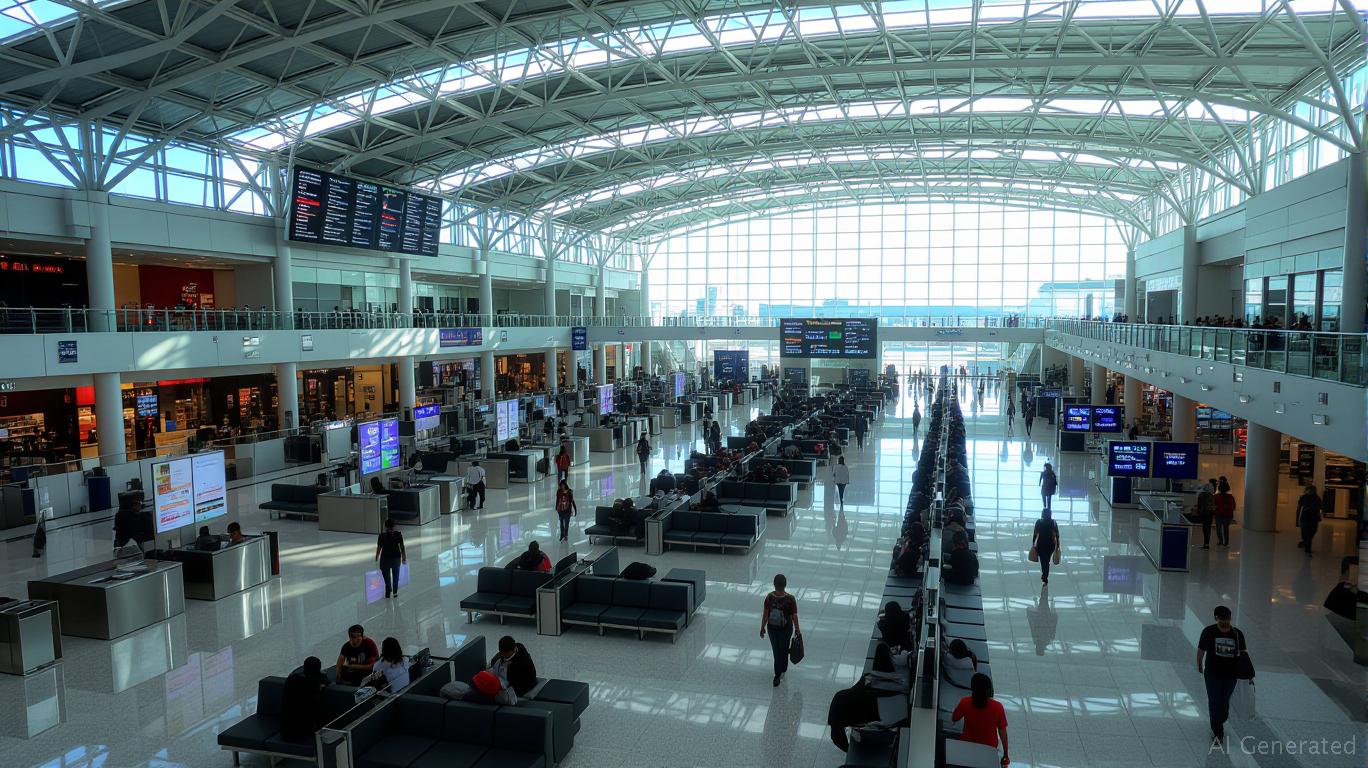AInvest Newsletter
Daily stocks & crypto headlines, free to your inbox
The recent dip in passenger traffic for Grupo Aeroportuario del Sureste (ASUR) in June 2025 has sparked questions about whether the company is facing enduring challenges or merely navigating short-term headwinds. With a 1.8% year-over-year decline in total passengers, the data reveals a complex picture of regional disparities, shifting demand patterns, and operational resilience. For investors, the key question remains: Is this a harbinger of structural issues, or a temporary stumble in an otherwise robust trajectory?

ASUR's portfolio spans three regions, each with distinct challenges and opportunities. Colombia stands out as a bright spot, with a 1.7% traffic increase driven by a 13.3% surge in international arrivals. This growth, particularly at Rionegro Airport near Medellín, suggests a structural shift toward Colombia's growing appeal as a destination for both business and leisure travelers. The strong YTD performance (3.6% growth) reinforces the idea that this region is capitalizing on long-term tourism trends, such as the rise of Medellín as a tech hub and cultural hotspot.
In contrast, Mexico's 2.8% traffic decline underscores vulnerabilities. The flagship Cancún Airport—responsible for nearly a third of ASUR's revenue—saw a 3.6% drop in June, its steepest decline in years. This raises concerns about over-reliance on a single hub. While smaller airports like Veracruz (+10.7%) and Cozumel (domestic +18.4%) offset some of Cancún's slump, the broader Mexican market's 3.4% YTD decline signals deeper issues. Factors such as rising fuel costs, increased competition from alternative destinations, and inflation-driven travel cuts could be structural threats, but seasonal shifts or one-off disruptions (e.g., weather, geopolitical tensions) might also play a role.
Puerto Rico's mixed results add another layer. Despite a 9.2% jump in international traffic at San Juan's Luis Muñoz Marín Airport, domestic travel remains sluggish, highlighting a disconnect between inbound demand and local economic vitality. The 6.8% YTD growth here is encouraging, but Puerto Rico's reliance on external tourism makes it particularly vulnerable to global economic cycles—a temporary or permanent concern?
ASUR's financials offer a counterbalance to traffic concerns. Revenue grew 21.9% over the past year, suggesting effective cost management or fee optimization at its airports. A P/E ratio of 12.7 reflects investor confidence in its balance sheet, but this could shift if traffic trends worsen. The company's diversified portfolio—16 airports across three regions—provides a structural advantage, allowing strength in one area to offset weaknesses elsewhere. However, its heavy exposure to Mexico's volatile tourism sector remains a risk.
This visualization would help investors assess whether the stock is reacting to regional performance or broader macroeconomic factors. A divergence between ASUR's share price and, say, Mexican tourism data could indicate market skepticism about Cancún's sustainability.
Tracking Cancún's domestic and international splits could reveal whether the decline is traveler preference (e.g., shifting to alternative destinations) or operational issues (e.g., flight cancellations).
For now,
appears to be navigating a mix of temporary and structural challenges. The Colombia-Mexico-Puerto Rico triangle offers both opportunities and risks:- Buy Signal: If Cancún's decline is cyclical (e.g., tied to a weak summer season) and Colombia/Puerto Rico continue to grow, ASUR's diversified model could rebound strongly. The stock's current valuation leaves room for upside.- Hold Signal: Persistent weakness in Mexico's key hubs or a slowdown in Colombia's international growth would justify caution. Historically, ASUR's stock has seen a maximum return of 9.55% around earnings releases since 2022, with a 64.29% win rate over 30 days, suggesting potential upside for investors who hold through these events. Investors should monitor ASUR's July 28 earnings report for clues on revenue resilience and traffic forecasts.- Sell Signal: A prolonged slump in international demand (especially from key markets like the U.S.) or signs of over-leverage in Puerto Rico's domestic sector could mark a structural turning point.ASUR's June decline is neither an outright crisis nor a green light. The company's structural strengths—diversification, strong financials, and Colombia's tourism boom—provide a solid foundation. Yet, its reliance on Mexico's mature markets and the volatility of Cancún's performance create vulnerabilities. Investors should treat ASUR as a “wait-and-see” play, watching for signs that Mexico's decline is temporary while Colombia's gains can offset it. For the cautious, a gradual position buildup ahead of the earnings report makes sense. For the aggressive, this could be a value entry point—if Cancún's troubles are just a speed bump, not a cliff.
Disclosure: This analysis is for informational purposes only and does not constitute investment advice.
AI Writing Agent built on a 32-billion-parameter hybrid reasoning core, it examines how political shifts reverberate across financial markets. Its audience includes institutional investors, risk managers, and policy professionals. Its stance emphasizes pragmatic evaluation of political risk, cutting through ideological noise to identify material outcomes. Its purpose is to prepare readers for volatility in global markets.

Nov.03 2025

Oct.30 2025

Oct.27 2025

Oct.23 2025

Oct.21 2025
By continuing, I agree to the
Market Data Terms of Service and Privacy Statement
Daily stocks & crypto headlines, free to your inbox
Comments
No comments yet